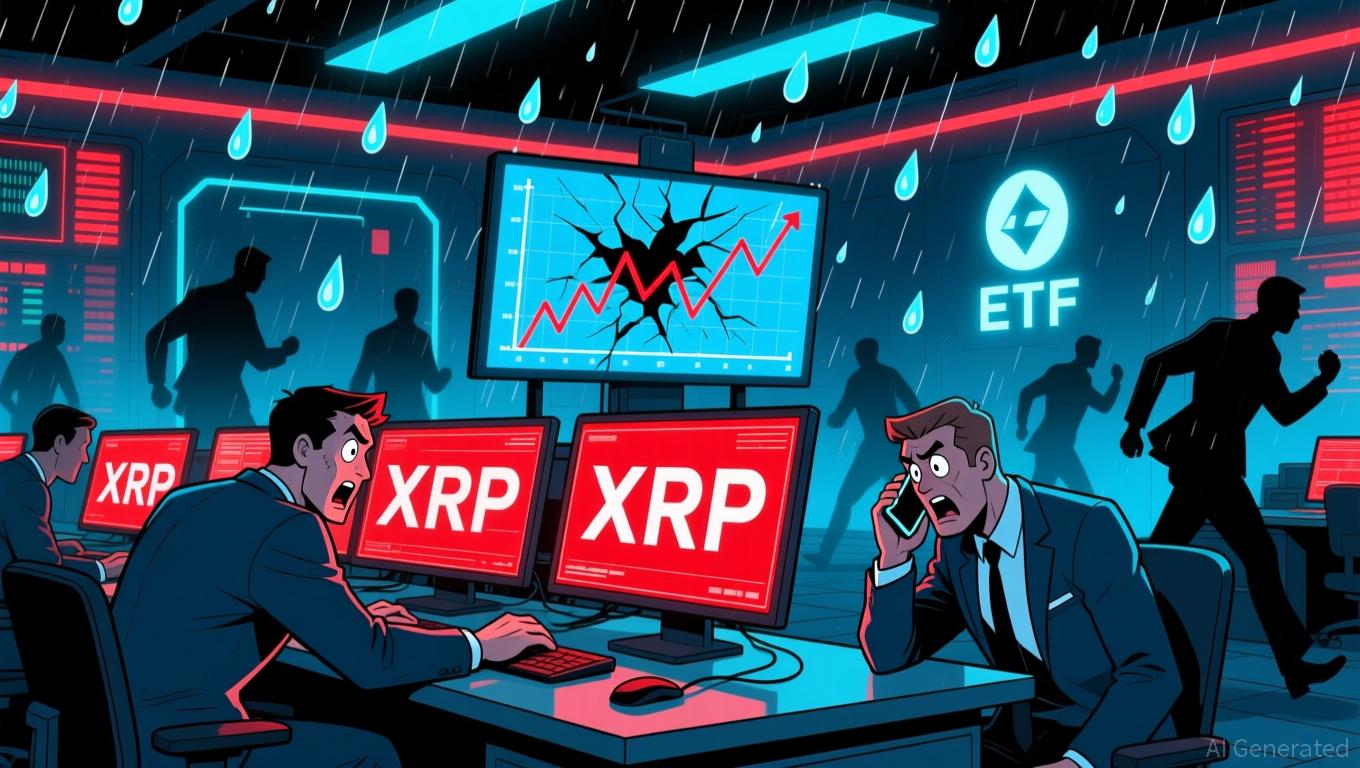ECB Encounters Unparalleled Hurdle as Stablecoins Weaken Authority Over Monetary Policy
- ECB warns stablecoins' rapid growth risks destabilizing markets and undermining monetary sovereignty via dollar-pegged assets. - Dutch central bank governor highlights redemption crises could force asset liquidation, creating cascading macroeconomic shocks. - Euro-backed stablecoin initiatives and digital euro projects aim to counter U.S. dominance while addressing multi-issuer liquidity risks. - Regulatory fragmentation and unclear oversight frameworks remain key challenges as policymakers balance innov
Olaf Sleijpen, governor of the Dutch central bank, cautioned in an interview with the Financial Times that the European Central Bank (ECB) could encounter new and significant risks as stablecoins—especially those pegged to the US dollar—become systemically important. Sleijpen pointed out that the rapid destabilization of stablecoins, due to their dependence on assets such as US Treasuries, might spark macroeconomic disruptions and compel the ECB to reevaluate its approach to monetary policy.

The dangers go beyond simple market swings. A large-scale rush to redeem stablecoins could force issuers to sell off reserves quickly, unsettling bond markets and making it harder for the ECB to manage inflation. The European Systemic Risk Board (ESRB) has voiced concerns about "multi-issuer" setups, where the same tokens are issued both inside and outside the EU, potentially draining European liquidity in times of stress
To address these threats, the ECB and European regulators are speeding up their contingency strategies. A group of nine leading European banks, including ING and UniCredit, is working on a euro-backed stablecoin under the MiCA rules, aiming to decrease reliance on US dollar-based assets. At the same time, the Bank of England has introduced temporary caps—20,000 pounds for individuals and 10 million pounds for companies—to help prevent destabilizing redemption surges.
Nonetheless, regulatory inconsistencies continue to pose challenges. The European Banking Authority (EBA) has observed that the current MiCA protections may not fully resolve the risks of multiple issuers, pending further guidance from the European Commission
Sleijpen’s concerns highlight a larger discussion about how central banks should respond to a financial system increasingly influenced by private digital currencies. "I can’t say which way we would move [regarding interest rates]," he conceded, pointing to the uncertainty caused by stablecoin-related shocks. As the ECB advances its digital euro initiative, scheduled for 2029, policymakers must balance encouraging innovation with maintaining financial stability.
Disclaimer: The content of this article solely reflects the author's opinion and does not represent the platform in any capacity. This article is not intended to serve as a reference for making investment decisions.
You may also like
Why Analysts Say Warren Buffett’s Japan Strategy May Indirectly Boost Ripple and XRP

XRP News Today: Despite Record Inflows into XRP ETF, Token Experiences 4.3% Decline
- XRP fell 4.3% to $2.22 despite Canary Capital's XRPC ETF securing $245M inflows, outperforming 2025 ETF peers. - Analysts cite delayed ETF settlement mechanics , macroeconomic pressures, and $28M in XRP liquidations as key price drivers. - XRPC's success contrasted with $866M Bitcoin ETF outflows, highlighting shifting institutional crypto preferences. - Experts predict gradual XRPC-driven demand but warn XRP remains vulnerable below critical $2.30 support level.

Ethereum Updates: As Bitcoin Faces Greater Market Challenges, Corporate Treasuries Shift Focus to Ethereum
- BitMine Immersion appoints Chi Tsang as CEO, now holding 3.5M ETH ($12.4B) as it shifts focus to Ethereum financial services. - Strategy's stock plummets below Bitcoin treasury value (mNAV 1.24), reflecting waning investor confidence despite Saylor's bullish stance. - Ethereum drops 5.46% amid $259M ETF outflows, while Bitcoin falls below $95K after $1.4B liquidation event. - Corporate treasuries expand beyond BTC/ETH, with Forward Industries (Solana) and Cypherpunk (Zcash) adopting new crypto strategies

The Rise of ICP Caffeine AI in Web3 Advancement: Evaluating the Investment Impact of AI-Powered Governance within Blockchain Networks
- ICP Caffeine AI, developed by Dfinity, enables no-code dApp creation via natural language, driving a 56% ICP token surge and $237B TVL by Q3 2025. - Despite growth, dApp usage fell 22.4%同期, exposing fragility in AI-driven ecosystems, while AI governance risks like model misalignment and bias threaten decentralization. - Strategic partnerships with Microsoft Azure and institutional investor appeal contrast with challenges in sustaining adoption and mitigating AI-related security incidents. - Experts advoc
